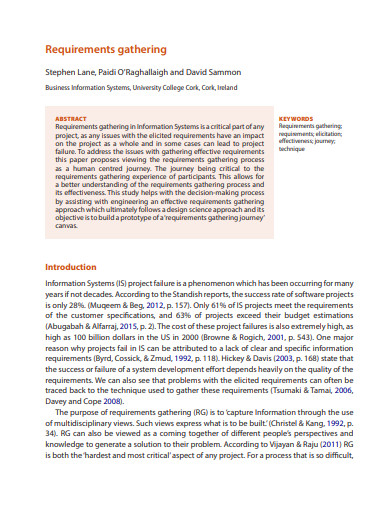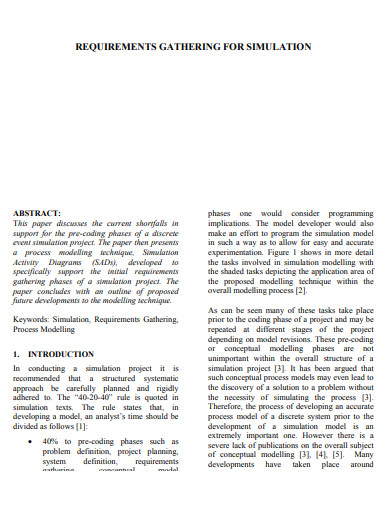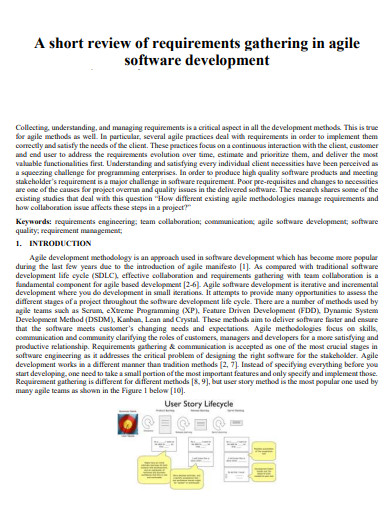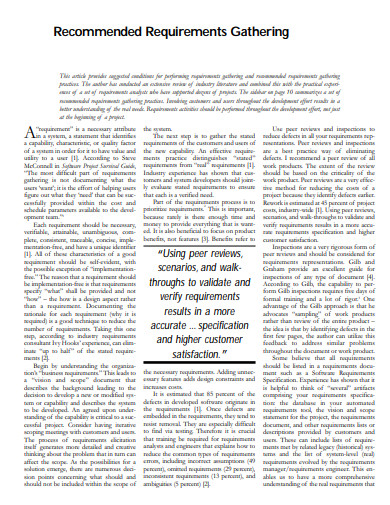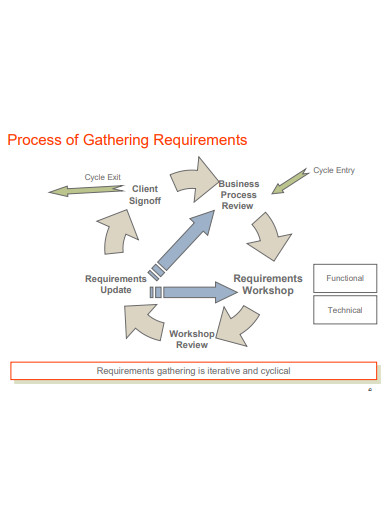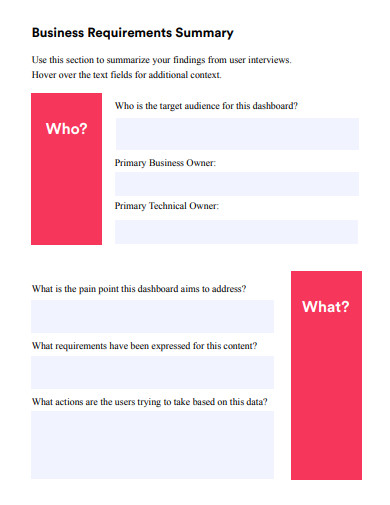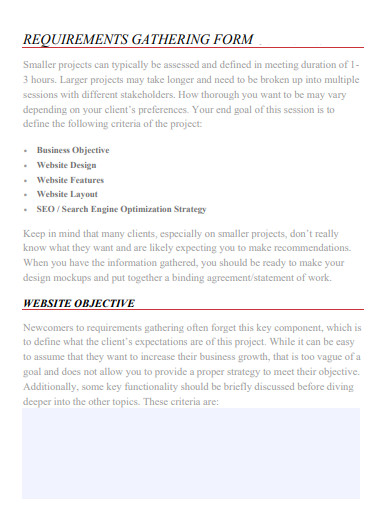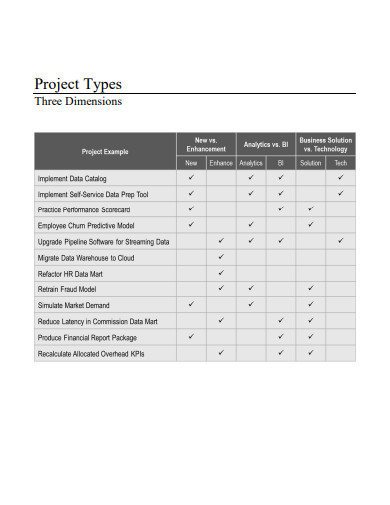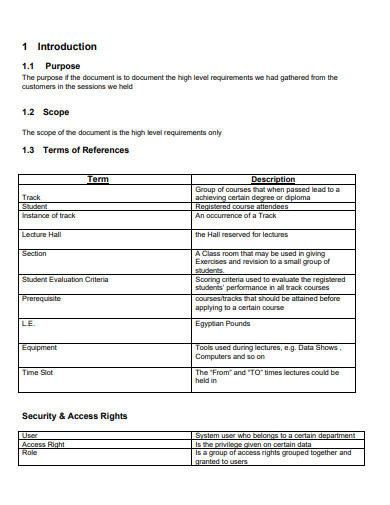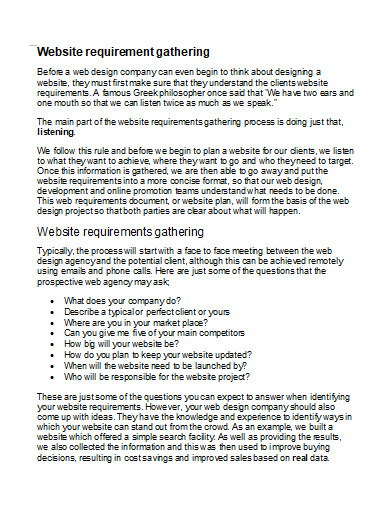Although gathering requirements may appear self-explanatory, it hardly gets attention it demands. It’s a simple job that’s often ignored, like stretching before exercising or brushing your teeth before bed. However, disregarding these seemingly insignificant details might result in injuries, cavities, or project hazards in the context of project management. A large project like this has many requirements, and as a project manager, you must take account of them all. Gathering requirements is a phase in the requirement analysis process, which includes gathering, recording, and analyzing project needs.
10+ Requirements Gathering Samples
Requirements gathering, also known as requirements elicitation, is the process of determining all of a project’s requirements. There are two sorts of project specifications: business requirements and technical requirements. Business requirements describe what a company will achieve with the project, whereas technical requirements describe how the venture must be carried out. They are obtained during the project life cycle’s start phase, but project managers must track them all through the project schedule because they can shift.
1. Requirements Gathering
2. Requirements Gathering for Simulation
3. Requirements Gathering Review
4. Sample Requirements Gathering
5. Simple Requirements Gathering
6. Business Requirements Gathering
7. Requirements Gathering Form
8. Software Requirements Gathering
9. Formal Requirements Gathering
10. Requirements Gathering Example
11. Website Requirements Gathering
6-step Requirement Gathering Process
Use the six-step approach shown below to collect your requirements. When you’re done, you should have a detailed requirements document defining the tools you’ll need to go through the project process.
Assign roles
The first step in obtaining requirements is to designate responsibilities in your project. This is the stage at which you identify the project stakeholders. Anyone involved in the project, whether internally or externally, is considered a stakeholder. A consumer is an example of an external stakeholder, whereas a department manager or board member is an example of an inside stakeholder. Determining these roles first will assist you in determining who should subsequently examine the scope of your project. Project managers, project administrators, designers, product testers, and developers are among the other jobs. These individuals can assist you in identifying the requirements and resources required to meet your project objectives.
Meet with stakeholders
Once you’ve discovered your project stakeholders, engage with them to learn what they hope to gain from the project. Recognizing what stakeholders want is important because they are the ones for whom you are providing deliverables. Because the stakeholders are the individuals for whom you will ultimately construct the project, you should address them questions that will help you establish your list of requirements.
Gather and document
As you approach your stakeholders with your questions, you will acquire information. The idea is to record everything you can so that you have all of the information you need to begin your project. Gather and document this data using a project management application. You may maintain your project plan, project requirements, and project communication in one location this way.
List assumptions and requirements
Create your needs management strategy depending on the info you’ve collected now that you’ve finished the intake phase. Think about the questions you set out to address during the requirements gathering phase.
Get approval
Once your project requirements are formalized, you’ll need clearance from stakeholders to guarantee you’re fulfilling user needs. Encourage effective communication to avoid scope creep by guaranteeing your stakeholders understand the project’s boundaries from the start. You can next move on with your action plan, which may include gathering resources and forming a team.
Monitor progress
The final step is to keep track of how your project is progressing. As you progress through project implementation, you can utilize project management software to keep track of your budgeted cost and other requirements. The advantage of project management software is that it allows you to view modifications to your project in real time and take rapid action when something goes wrong.
FAQs
Why are questionnaires beneficial?
Questionnaires can be useful if you need to pose the same question to all parties. To guarantee that no one leaves anything out, provide the questionnaire to stakeholders ahead of time and give them time to answer questions on project requirements. While surveys can be useful for gathering requirements, they are ineffective for executive stakeholders who may be too busy to complete them.
What is mind mapping?
Mind mapping is a visual method of brainstorming that is very useful for determining what project needs are required. Put your major project goal in the center of your mind map. List categories of goods you need in bubbles that branch off from the main goal. You can insert more precise criteria as the map branches out until you’ve captured all of your project needs.
Downloading a requirements gathering template will also help you get a head start on your project approach. This will assist everyone in aligning with business, user, and system needs. Whatever tools are used, ensure that they can be accessible from numerous places and on multiple computers, regardless of where each person engaged is located. Make it as simple as possible for everyone to connect, send updates, and provide feedback across all platforms.
Related Posts
FREE 10+ Brand Story Samples in PDF | MS Word
FREE 10+ Brand Guidelines Samples in PDF | MS Word
FREE 10+ Employee Offboarding Samples in PDF | MS Word
FREE 10+ Process Documentation Samples in PDF | MS Word
FREE 3+ Introduction About Myself Samples in PDF
FREE 10+ Process Map Samples in PDF | MS Word
FREE 10+ Decision Matrix Samples in MS Word | PDF | DOC
FREE 10+ Diversity and Inclusion Statement Samples [ University, Faculty, Value ]
FREE 10+ Bid Comparison Samples in PDF | MS Word
FREE 10+ HR Records Samples in PDF | MS Word
FREE 10+ Brand Brief Samples in PDF | MS Word
FREE 10+ Merger and Acquisition Template Samples in PDF | MS Word
FREE 10+ Cost Comparison Samples in PDF | MS Word
FREE 10+ Brand Pyramid Samples in PDF
FREE 10+ Workflow Mapping Samples in PDF | MS Word

